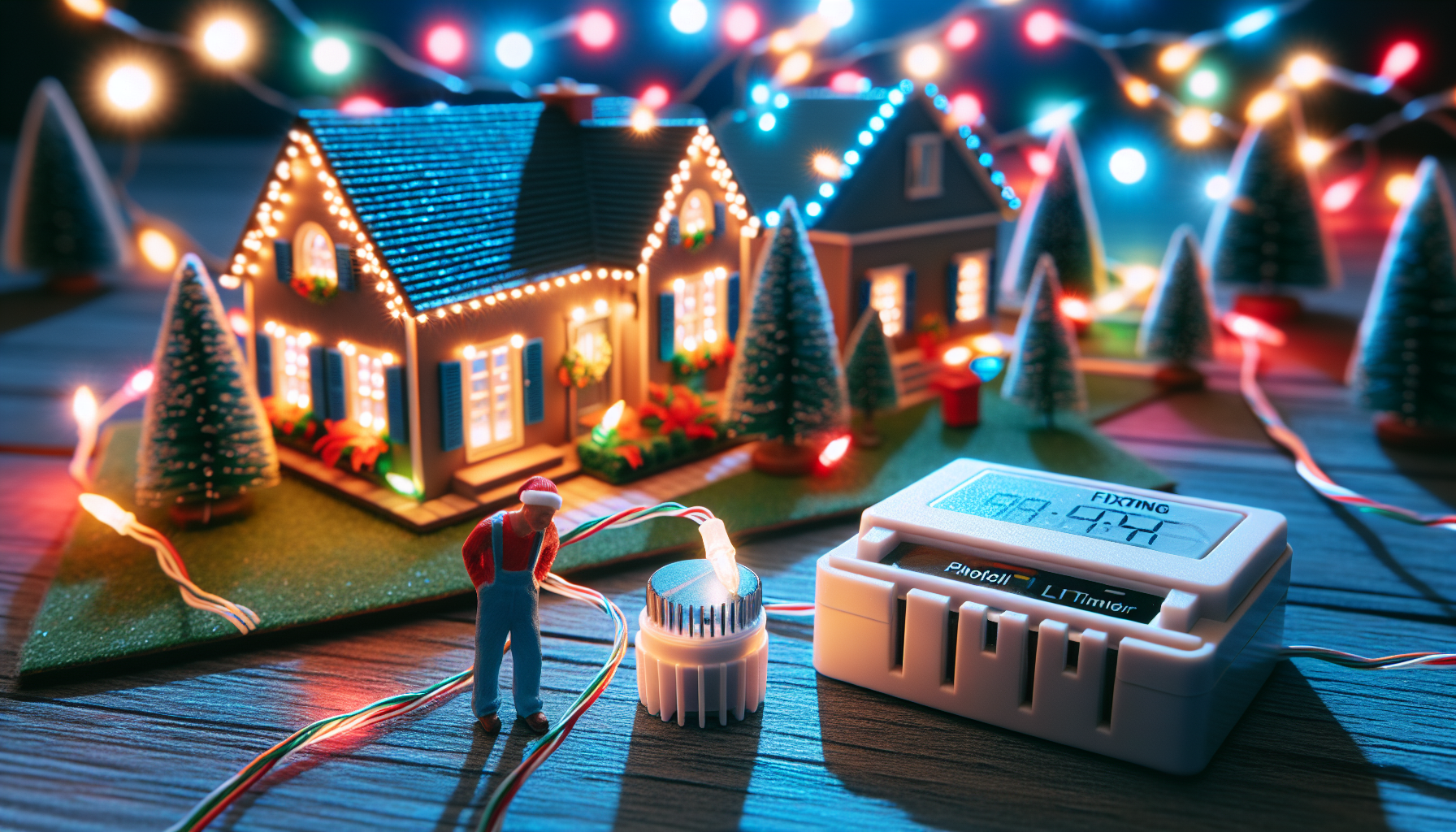Table of Contents
- Understanding the Cause of Flashing Lights
- The Simple Fix
- Additional Tips for Preventing Flashing Lights
- Frequently Asked Questions
- Conclusion
Understanding the Cause of Flashing Lights
Have you ever experienced the frustration of your Christmas lights flashing on and off, leaving your neighbors wondering if you’ve installed “junk lights”? This common issue is often caused by a simple problem that can be easily solved. The culprit? Your photocell timer.
Photocell timers are a popular choice for automatically turning on your lights at dusk and off at dawn. However, when the photocell is placed too close to the lights it’s controlling, it can cause the lights to flash on and off, creating an unwanted strobe effect.
The Simple Fix
The solution to this problem is straightforward: you need to move the photocell timer away from the lights it’s controlling. By doing this, you’ll eliminate the interference that’s causing the flashing effect.
Here’s a step-by-step guide to fixing the issue:
- Identify the photocell timer: Locate the photocell timer that’s controlling the flashing lights. This is typically a small, round or square device that’s installed near the lights.
- Move the photocell timer: Carefully remove the photocell timer from its current location and move it to a new spot, at least a few feet away from the lights. This will ensure that the photocell isn’t being triggered by the lights themselves.
- Secure the photocell timer: Once you’ve found the perfect spot for the photocell timer, secure it in place using screws or another appropriate method.
- Test the lights: Turn on the lights and observe them closely. The flashing should have been eliminated, and your lights should now stay on consistently throughout the night.

Additional Tips for Preventing Flashing Lights
While moving the photocell timer is the primary solution, there are a few other steps you can take to help prevent flashing lights:
- Use a mechanical timer: Instead of a photocell timer, consider using a mechanical timer to control your lights. Mechanical timers are less prone to interference and can provide a more reliable solution.
- Adjust the photocell sensitivity: If you decide to stick with a photocell timer, try adjusting the sensitivity of the photocell. This may help reduce the chances of it being triggered by the lights themselves.
- Invest in high-quality lights: Opt for professional-grade LED lights, which are less likely to experience flashing issues compared to lower-quality options.
Frequently Asked Questions
Why do my Christmas lights keep flashing?
The most common reason for flashing Christmas lights is that the photocell timer controlling the lights is placed too close to the lights themselves. This can cause the photocell to be triggered by the lights, leading to the flashing effect.
How do I stop my Christmas lights from flashing?
To stop your Christmas lights from flashing, the best solution is to move the photocell timer to a new location, at least a few feet away from the lights it’s controlling. This will eliminate the interference that’s causing the flashing.
Can I use a mechanical timer instead of a photocell timer?
Yes, you can use a mechanical timer instead of a photocell timer to control your Christmas lights. Mechanical timers are less prone to interference and can provide a more reliable solution for preventing flashing lights.
What kind of lights are less likely to experience flashing issues?
Professional-grade LED lights are generally less likely to experience flashing issues compared to lower-quality options. Investing in high-quality lights can help reduce the risk of flashing and other lighting problems.
Conclusion
Flashing Christmas lights can be a frustrating issue, but it’s often a simple problem with a straightforward solution. By moving the photocell timer away from the lights it’s controlling, you can eliminate the interference that’s causing the flashing effect and enjoy your lights shining brightly throughout the holiday season.
